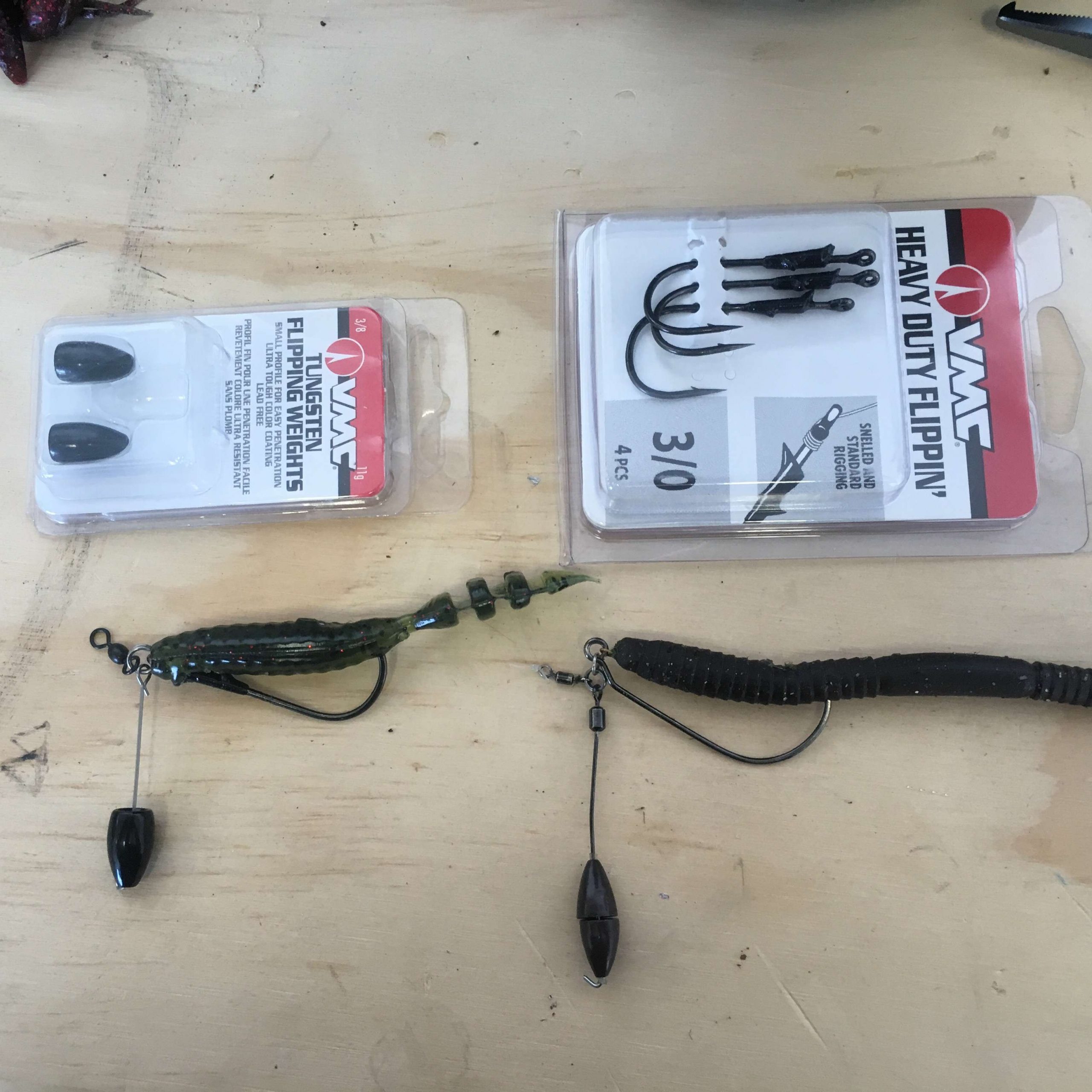
This new technique is really exciting to me. That’s unusual. It’s hard to learn something new or to get really fired up about a new way to catch bass after nearly 20 years as a professional angler, but the punch shot has done it — big time!
I didn’t get a chance to fish it at Table Rock Lake last week at the Toyota Trucks Bonus Bucks tournament like I said I would, but I did fish it in Japan. It’s the real deal. The best way to start is by looking at the picture. The one on the right is the one I fished in Japan, and the one on the left is one I built real fast for the photo. The one from Japan is the best.
Notice the wire dropping down to the weights. It has a swivel on it where it attaches to one of the rings at the top. That lets everything spin freely as it drops down — no twist.
You’ll also notice that they built the weight with two worm weights. One has the pointed end down and the other has it up. That allows the weight to enter and exit the muck and whatever else is on the bottom without getting hung up and ruining your cast or forcing you to waste time retying. And, the fact that there are two weights gives the rig a clicking sound as it falls and shakes.
Along with those two things the wire holds the bait up, off the bottom. It’s stiff. With a normal punch rig your weight falls through the heavy vegetation but then it gets buried in the bottom because fluorocarbon is limp. It lets the bait fall all the way down. No bass is going to dig it out. With the punch shot they can see the lure holding up, higher in the water column.
At the same time all this good stuff is happening the lure is swinging freely. It’s not directly attached to the wire or the main line. It’s attached to the rig by means of two split rings which give it freedom of movement. That’s very different than what you get with a traditional punch or drop shot rig.
I’ll admit this rig might have too much hardware to be useful in open water. All that metal might cause the fish to shy away. A standard drop shot will probably be a better choice. But that’s not going to happen in heavy cover, mats or thick pads. Under those conditions you’re getting a reaction bite. The hardware won’t bother them at all.
This thing is the real deal. Did I say that before? I’m excited.
I can’t wait to try it in heavy timber or in Florida where most of the bottoms are covered in goo and slime. If you want to give this thing a try, you can get the parts for it from VMC or from any lure parts store — online or brick-and-mortar. Make it exactly like the Japanese version.
Mike Iaconelli’s column appears weekly on Bassmaster.com. You can also find him on Facebookand Twitter or visit his website, mikeiaconelli.com.





